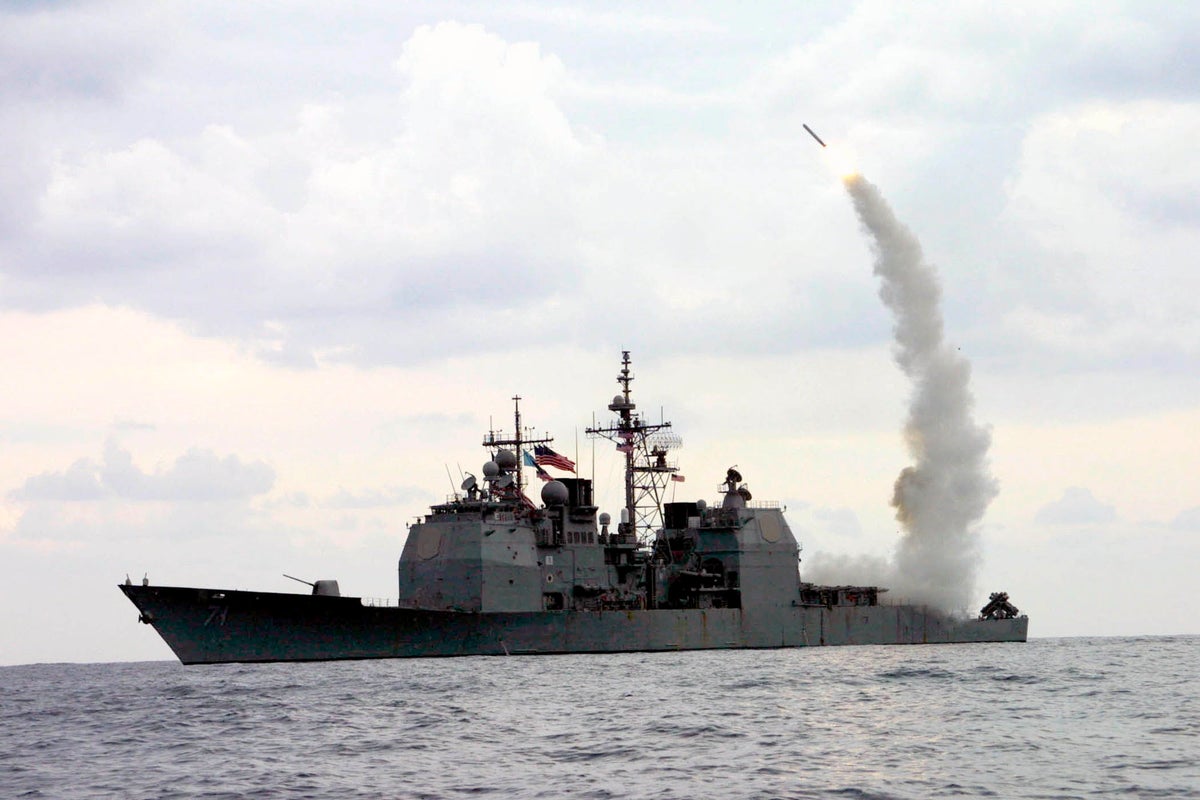
Japan's defense spending will jump 20% to a record 6.8 trillion yen ($55 billion) next year as the country prepares to deploy U.S.-made Tomahawks and other long-range cruise missiles that can hit targets in China or North Korea under a more offensive security strategy.
The planned purchase of Tomahawks at 211.3 billion yen ($1.6 billion) is a centerpiece of Japan's 2023 budget plan approved Friday by Prime Minister Fumio Kishida's Cabinet and shows his government's determination to rapidly arm itself with more strike capability under the new strategy.
Additionally, Japan will pay the United States 110 billion yen ($830 million) for equipment and software needed to launch Tomahawks, as well as fees for the technology transfer and staff training in the coming year, defense officials said.
The hefty budget plan, pending parliamentary approval, is the first installment of a five-year, 43-trillion-yen ($325-billion) military spending plan under the new defense buildup plan also announced last week. The new spending target follows the NATO standard and will eventually push Japan’s annual budget to about 10 trillion yen ($73 billion), the world’s third biggest after the United States and China.
The budget plan comes a week after Kishida's government announced Japan's new National Security Strategy, stating its determination to possess controversial “counterstrike capability” to preempt enemy attacks and nearly double its spending within the next five years to protect itself from growing risks from China, North Korea and Russia and escalating fear of a Taiwan emergency.
The strategy is a historic change from Japan’s exclusively self-defense policy since the end of World War II. China, with its rapid arms buildup, increasingly assertive military activity and rivalry with the U.S., presents “an unprecedented and the greatest strategic challenge” to the peace and security of Japan and the international community, the strategy stated.
Tomahawks will be deployed over two years from 2026 to 2027 on advanced Aegis radar-equipped destroyers with vertical launch systems for ship-to-surface attacks, defense officials said.
Japan will also buy more foreign-developed standoff missiles for launch from warplanes — a 500-kilometer- (310-mile-) range Joint Strike Missile from Norway for F-35A fighters, and Lockheed Martin’s Joint Air-to-Surface Standoff Missile with a range of about 900 kilometers (560 miles), for upgraded F-15s.
Japan will spend 94 billion yen ($710 million) next year to work on upgrading and mass production of Type-12 land-to-ship guided missiles develped by Mitsubishi Heavy Industries for deployment within the next few years.
To reinforce strike capability and range, Japan is adding eight more F-35Bs at 143.5 billion yen ($1.08 billion) capable of short takeoffs and vertical landing on either of the two formerly helicopter carriers Izumo and Kaga that are being retrofitted so they could be operated jointly with the U.S. military.
Over the next five years, Japan will spend about 5 trillion yen ($37 billion) on standoff, or long-range missiles, with deployment beginning in four years. Annual spending for 2023 on long-range ammunition alone will be tripled from this year to 828 billion yen ($6.26 billion).
Japan will develop other types of arsenals, such as hypersonic weapons and unmanned and multi-role vehicles for possible collaboration with the F-X next-generation fighter jet Japan is developing with Britain and Italy for deployment in 2035. The Defense Ministry is also developing arsenals designed for defending remote southern islands, including a Japanese-controlled East China Sea island disputed with China.
Japan in using strike-back capability needs to fully rely on the United States to detect early signs of attacks and determine targets because of a lack of high levels of intelligence and cybersecurity, experts say.
To address the concern, Japan will spend about 100 billion yen ($7.6 million) next year also to beef up cybersecurity to protect Japanese defense technology and industry.
Japan will also spend 220 billion yen ($1.7 billion) to build two compact destroyers to be equipped with Aegis radars to strengthen the country's missile interception capability as a deterrent to advanced missiles.
Another key purchase is unmanned aerial vehicles for assaults and reconnaissance. Defense officials said they plan to test a number of foreign-developed UAVs, including Turkish-made Bayraktar used in Ukraine, as well as those from Israel, the United States, as well as home-developed Fuji Imvac.
Japan says counterstrike capability is indispensable and constitutional if it’s in response to signs of an imminent enemy attack. But experts say it is extremely difficult to conduct such an attack without risking blame for striking first. Opponents say strike capability goes beyond self-defense under Japan’s pacifist post-WWII constitution, which limits use of force strictly to defending itself.
That principle, however, was eased in 2015 by then-Prime Minister Shinzo Abe’s constitutional reinterpretation allowing Japan to defend its ally, the United States, in what is known as collective self-defense, providing a legal basis for Japan to build up its military and expand the roles it performs.







